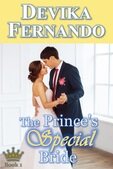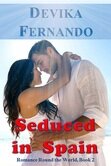Guest Post: Love in a Local Town
There’s something special about international romance. From the first tingling of adventure as you slip your passport over the airport check-in counter, to the screech of aircraft tires as you race to a halt on your receiving runway, and how can we forget the first flutter of the heart when you find yourself face-to-face with someone thought long gone, or someone completely news. There’s just something exciting about exploring new locales, and the feelings that go along with that – let alone with the added excitement of romance on top of it.
Still, what if you’re writing about a love in a town that’s old and familiar like a favourite pair of shoes? What if it’s a love that’s not quite gone, but buried very deep under boxes of old memories and layers of hurt and neglect? How exactly do you make that happen? Well, it’s exactly what I thought I’d try with A Recipe for Disaster.
For the first half of 2017, I’d been in a bit of a writing slump. I’d self-published four books in two years, and things were beginning to wear a bit thin. It had been a massive learning curve, full of bumps and bruises and unrealised potential, and I had to decide what I was going to do in the future.
HQDigital kind of made that decision for me when they ran a Twitter ‘competition’ for authors interested in pitching their novels. With nothing left to lose, and with great prodding from a friend, I pitched three novels and provided a sample of what became A Recipe for Disaster.
From conception to release, the book took about twelve months, cover to cover. One of the things I mulled over was: where am I going to set this book?
I could have picked London, but some of the themes wouldn’t have worked. With everywhere in Europe just a short flight away, it would have changed the book significantly. I thought about creating my own fictional town along the Great Ocean Road. It wasn’t until I went to a local bookshop that I made a decision: I’d set the book in my town.
It was part laziness and part hearing another author talk about setting their books in Queensliff. Dorothy Jackson explained that she didn’t often come across Geelong and surrounds in literature, and she was right. I’m not sure I’ve ever seen Geelong in a book, except for perhaps The Biographer’s Lover. And I know I certainly hadn’t seen Inverleigh in a book.
So, off I went.
One of the biggest challenges for me was getting the town just right. It’s easy enough to walk around here everyday and take in the big picture, but what I needed was the minutiae. I needed to be able to draw Inverleigh in such a way that people across the other side of the world would be able to picture her in decent enough detail.
People had to feel the rush of a log truck on the narrow bridge as they come into town, or the see the yellowing lights in the old bluestone pub or smell the fresh chips cooking in the milk bar. We have a small suspension bridge that’s a little wobbly and a steep ascent into the new estate. If you’re not fit, it’ll take you by surprise (it still gets me sometimes).
Also, I think a lot of people have a love/hate relationship with their hometowns. I’m not exception to that rule. There are things I love: a reasonably affordable mortgage, space for Shane’s shed, and being in a small town. Conversely, some of the things I don’t love are: being in a small town (politics et al), being so far from the middle of town, the cost of fuel.
If I was going to write a book though, I had to get past the negatives and shine some love on Inverleigh and Geelong. And, honestly, it wasn’t that hard.
All I had to do was think back to the first times I saw both locations. As a teenager, my friend and I would come to Geelong often. We’d climb into her car, grab some snacks, and make our way around the bay as if it were some weekend excursion we might not come back from.
I remember feeling like such a tourist as we drove around the big roundabout at the top of Mercer Street that’s since been replaced by traffic lights. We looked around in awe at this city that was so much like Melbourne, but also so far removed from it and, yet, we were so close to the suburb we grew up in just thirty kilometres up the road.
And, so, that’s where a lot of my descriptors for Geelong come from; the love of the red brick buildings that now house shopping centres, the big grassed spaces near the waterfront, and the lights of the city at night. Some new favourites made it into the book, too, just because I love wandering around our laneways and finding new places to eat.
Okay, so onto Inverleigh before I keep you all here ALL day (and I’m aware it’s starting to look like that).
There’s a lot to love around here. I took long walks to reacquaint myself with the suburb and its surrounds. I can do a reasonable lap of our town in two hours. It’s a ten-kilometre loop, and I can cover a lot of the different faces of Inverleigh in that time.
As I start off for my walk, I’ll pass the old miner’s cottage that served as inspiration for Lucy and Oliver’s first home. It’s tight and cosy and, if I used my imagination, I could picture it as warm and welcoming, a chain of smoke billowing from a stoked fire. Combine that with their shared love of cooking, and you’ve got a cosy home indeed.
Soon, I pass a paddock of cows and llamas and cross the suspension bridge. If you get it at the right time of day, light dapples through the trees above and tinkles from the small creek that runs underneath.
There’s a scene in A Recipe for Disaster that has Lucy and Oliver crossing the bridge and climbing the steep hill to a party in the newer estates. While the bridge doesn’t bother me, the hill certainly does. It takes a good bit of practice before I can take that hill in one fell swoop.
Compared to the older part of town with lots of weatherboard homes and 1980s brick veneer marvels, the new estate on the hill is fall of large sprawling houses, spruce trees, and some fancy architecture – some of which served as inspiration for the house and party Lucy and Oliver attend.
Of course, a long lap of town isn’t complete without a trip to the pub. It’s one of the first places mentioned in A Recipe for Disaster, but certainly not one we can get. Recently refurbished, you can get great meals and cold drinks here. It is bluestone and beautiful and, when recent rains threatened flooding, it was the first place sandbagged.
I think that last, but certainly not least, the centrepiece of the novel: the café. A lot of people have asked if I drew inspiration from our local café, Red Door. The answer is yes and no. I adore the building, and I can see exactly how Lucy’s and Oliver’s restaurant dreams would fit into it. It’s in the exact spot I pictured their café being – just in the slip lane off the Hamilton Hwy/High Street, and a short walk from the miner’s hut they lived in.
I could picture Oliver mopping floors, a slightly different floorplan, and Patrick carting a circular saw around, pencil behind his ear and getting his Han Solo attitude on. Most of all, I could picture it as a nice homage to that homely thing I love to do – baking . . . but I’ll save the baking chat for later.
Photo of Inverleigh Pub: me
Photo of A Recipe for Disaster: me
Photo of Red Door Café from: https://tetkelly.wordpress.com/2013/09/14/a-knock-on-red-door-cafe/

















 RSS Feed
RSS Feed